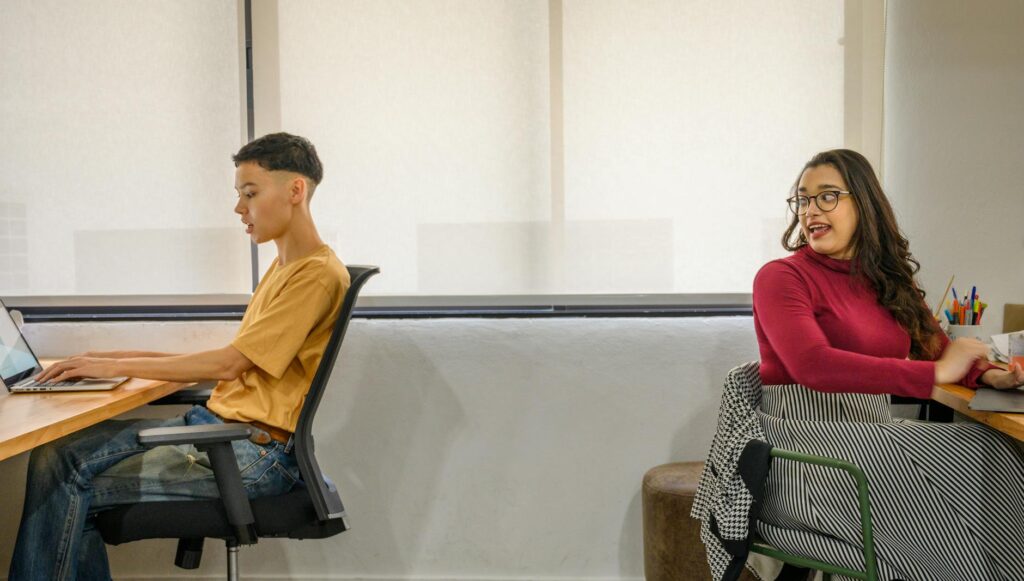What is optimal work environment setups?

What is optimal work environment setups?
Creating an optimal work environment is essential for enhancing productivity and ensuring well-being. The right setup can make a significant difference in how motivated and effective you feel at work. Whether you’re at home or in an office, understanding how to design your workspace can boost your performance and satisfaction.
Understanding the Optimal Work Environment
An optimal work environment encompasses more than just a desk and a chair. It’s a harmonious blend of physical space, emotional factors, and personal preferences. When all elements align, it can enhance your productivity and well-being significantly.
Key Elements of an Optimal Work Environment
The foundation of any effective workspace consists of essential elements such as lighting, ergonomics, and layout.
- Lighting: Natural light is the best source, as it reduces eye strain and enhances mood. Consider positioning your workspace near windows or using full-spectrum bulbs to mimic daylight.
- Ergonomics: Comfort is crucial. An ergonomic chair and desk can reduce physical strain and fatigue. It’s not just about aesthetics; it’s about maintaining your health while working.
- Layout: The arrangement of your workspace matters. A clean, organized layout minimizes distractions and promotes focus.
You can explore guidelines for creating such environments in resources like this Harvard Business Review article, which discusses optimal workplace configurations.
Psychological Factors in Work Environment Setups
Your mental state plays a significant role in your productivity. Comfort, personalization, and minimalism can greatly influence how effective your workspace is.
- Comfort: A cozy environment encourages prolonged engagement with tasks. Make sure you have the right temperature and noise levels that suit your preferences.
- Personalization: Adding personal touches, like photos or plants, can make a workspace feel more inviting and conducive to creativity.
- Minimalism: Clutter can lead to distraction. A minimalist setup helps maintain focus and clarity of thought.
Ergonomics and Comfort
When it comes to optimal work environment setups, ergonomics is paramount. The right furniture can greatly enhance your comfort, which directly impacts your productivity.
Choosing the Right Furniture
Selecting ergonomic furniture is a smart investment. Here are a few recommendations:
- Desks: Look for adjustable-height desks that allow you to alternate between sitting and standing. This flexibility can help reduce fatigue.
- Chairs: Invest in an ergonomic chair that supports your back and promotes good posture. This can prevent discomfort during long work hours. Research shows that using such furniture can boost productivity and improve wellness (Alpha Your Space).
- Accessories: Consider using a footrest, keyboard tray, or monitor stand to enhance comfort and reduce strain on your body.
Importance of Layout
The arrangement of your workspace can also affect workflow and efficiency. Ensure that your most-used items are easily accessible. A logical layout allows you to maintain focus and flow without unnecessary interruptions.
Technology Integration
In today’s digital world, technology plays a vital role in creating an optimal work environment.
Essential Tools and Gadgets
Integrating the right tools can streamline your work processes and enhance productivity. Consider the following:
- Monitors: Larger screens or dual monitors can enhance visibility and reduce eye strain. They allow for multitasking without constant tab-switching.
- Keyboards: An ergonomic keyboard can help maintain a natural hand position, preventing strain.
- Software: Utilizing productivity software can help keep tasks organized, track time, and manage projects effectively.
As remote work becomes increasingly common, having the right technology is essential for maintaining efficiency.
Impact of Remote Work Technologies
Remote work technologies have transformed how we work. Tools like video conferencing and project management software facilitate collaboration and communication, making it easier to connect with colleagues from anywhere. For tips on setting up your remote workspace, check out this Reddit discussion that shares insights on comfortable setups.
Creating a Balanced Atmosphere
A balanced atmosphere in your work environment promotes work-life equilibrium, reducing stress levels and increasing satisfaction.
Incorporating Breaks and Downtime
Integrating regular breaks into your routine is essential for maintaining focus and energy. Studies show that short breaks can significantly enhance productivity. Set timers to remind yourself to step away, stretch, or take a quick walk. This simple strategy can help recharge your mind.
Personalization for Motivation
Your workspace should reflect your personality and preferences. By personalizing your environment, you create a space that feels uniquely yours, which can boost motivation. Whether it’s a favorite mug or inspiring artwork, these touches can enhance your work experience.
Conclusion and Action Steps
In conclusion, creating optimal work environment setups can lead to significant improvements in productivity and well-being. By focusing on key elements like ergonomics, technology integration, and personal comfort, you can design a workspace that not only meets your needs but also inspires you. Start by assessing your current setup and identifying areas for improvement. Consider investing in ergonomic furniture and personalizing your space to reflect your style. Embrace technology to streamline your workflow and ensure you incorporate breaks to maintain balance.
By taking these steps, you can transform your work environment into a space where you feel energized and productive. Remember, the right setup is not just about aesthetics; it’s about creating a sustainable, engaging, and effective workspace.

Photo by Ketut Subiyanto